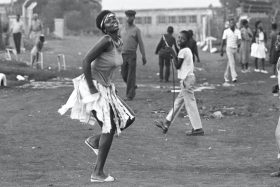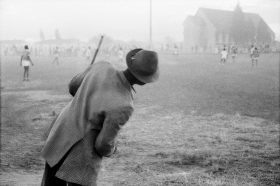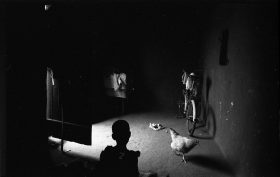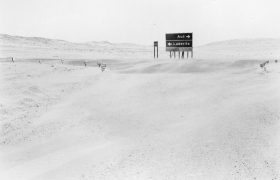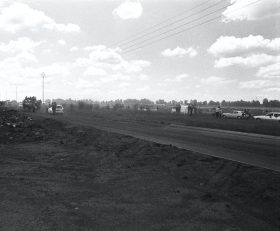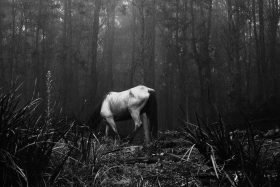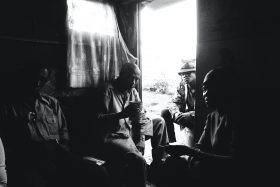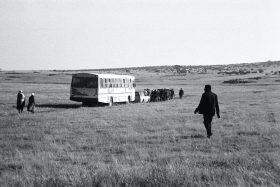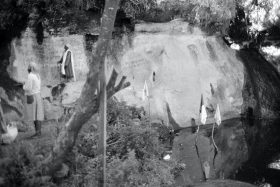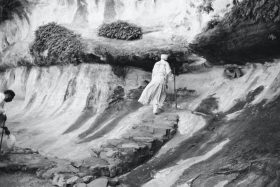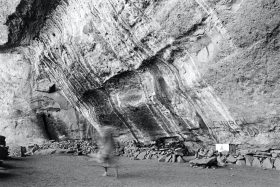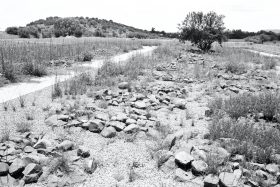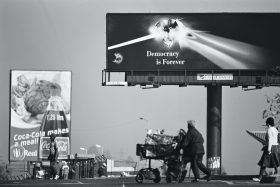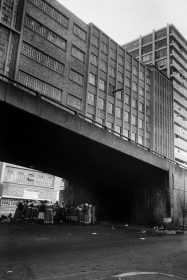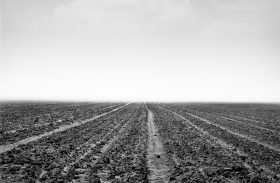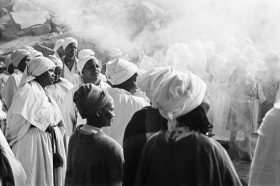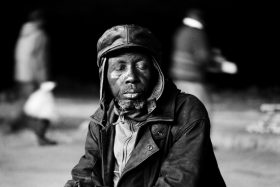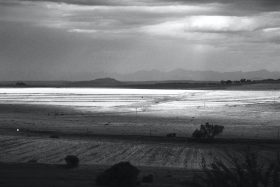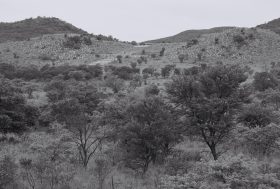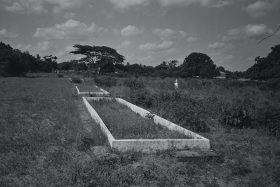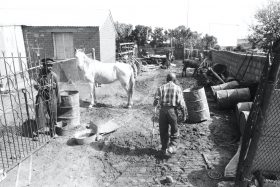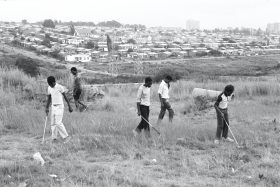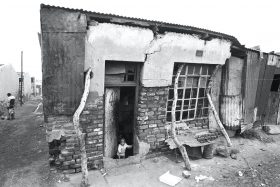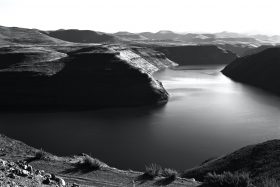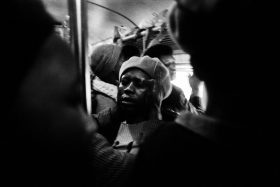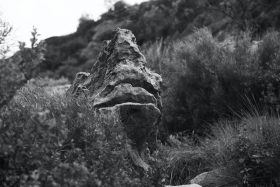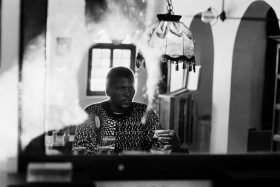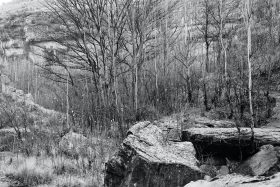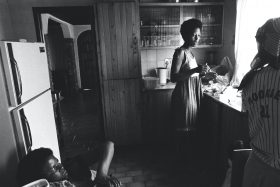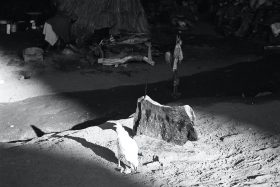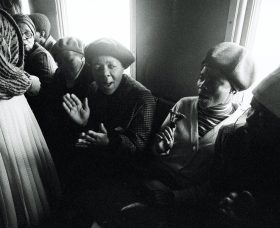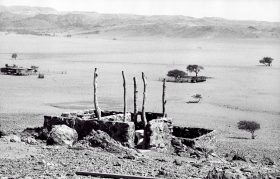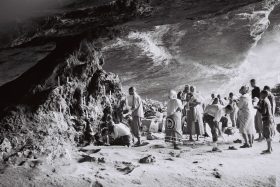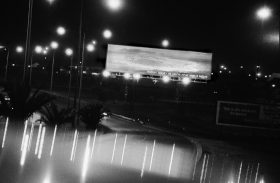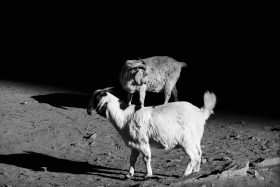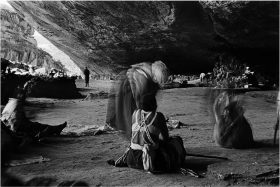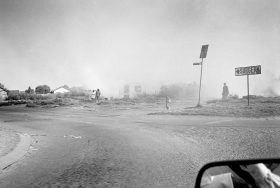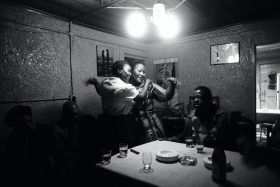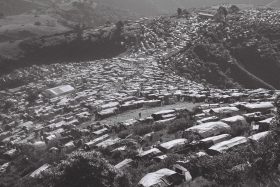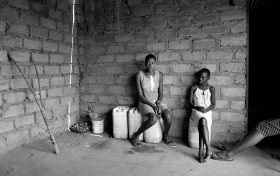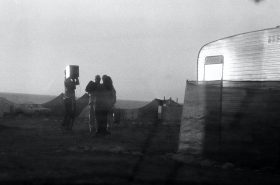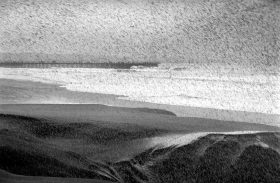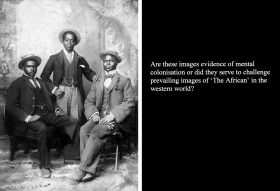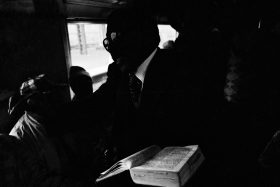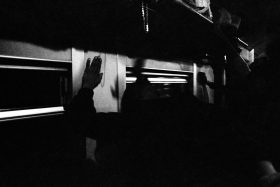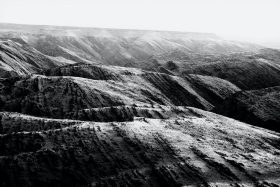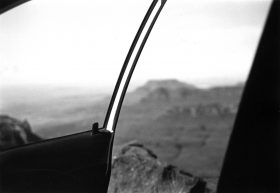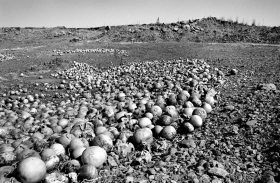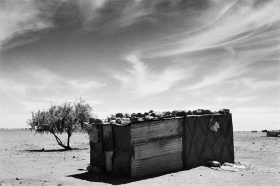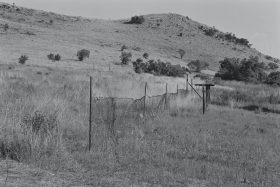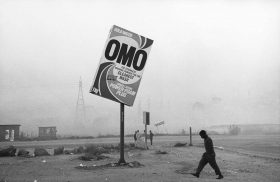Artworks by Mofokeng, Santu
![Sm 1018 04]()
"Comrade Sister," White City Jabavu
![Sm 1018 01]()
23rd Player, White City Jabavu
![Sm 1041 02]()
Afoor Family Bedroom, Vaalrand
![Sm 1034 04]()
Aus/Luderitz, Namibia
![Sm 1018 02]()
Avalon Cemetery, Chaiwelo
![Sm 1004 11]()
Buddhist Retreat, near Pietermaritzburg
![Sm 1018 03]()
Chicken Farm Shebeen, Rockville
![Sm 1034 08]()
Chief More's Funeral, GaMogopa
![Sm 1004 07]()
Christmas Church Service, Mautse Cave
![Sm 1004 14]()
Christmas Church Service, Mautse Cave
![Sm 1004 04]()
Church of God, Motouleng
![Sm 1034 05]()
Concentration Camp Graves, Brandfort
![Sm 1028 02]()
Democracy is Forever, Pimville
![Sm 1045 02]()
Doornfontein, Downtown JHB
![Sm 1031 01]()
Dust-storms at Noon on The R34 Between Welkom and Hennenman, Free State
![Sm 1004 03]()
Easter Sunday Church Service
![Sm 1004 13]()
Eyes-wide-shut, Motouleng Cave, Clarens
![Sm 1034 07]()
Farm in Modderpoort
![Sm 1034 01]()
Farm Murder Landscape
![Sm 1034 06]()
Fevriary 3 Mass-grave, Mozambique
![Sm 1018 05]()
Fire-wood Seller, Orlando East
![Sm 1018 07]()
Golf in Zone 6, Diepkloof
![Sm 1018 06]()
House #40, Kliptown
![Sm 1004 05]()
Inside Motouleng Cave, Clarens
![Sm 1034 03]()
Katse Dam, Lesotho
![Sm 1014 02]()
Laying of Hands, Johannesburg – Soweto Line
![Sm 1004 09]()
Mautse Landscape, Ficksburg
![Sm 1041 01]()
Moth'osele Maine, Bloemhof, May 27, 1994
![Sm 1004 08]()
Motouleng Landscape with Poplar Trees and Altar
![Sm 1018 09]()
Mrs. Nhlapo, Rockville
![Sm 1004 06]()
Offertory/Shrine, Motouleng Cave, Clarens
![Sm 1014 03]()
Opening Song, Hand Clapping and Bells
![Sm 1034 09]()
Out-House of a Soft-Drink and Beer Store, Namibia
![Sm 1004 02]()
Prayer Service at the Altar on the Easter Weekend at Motouleng Cave – Free State
![Sm 1028 03]()
Robben Island as You Have Never Seen it Before
![Sm 1004 12]()
Sacral Animals, Motouleng Cave, Clarens
![Sm 1004 01]()
Sangoma Sisters Gladys and Cynthia Leading Initiates in the Afternoon 'Ingoma,' Clarens
![Sm 1018 08]()
Senaoane, Soweto
![Sm 1018 10]()
Shebeen, White City
![Sm 1045 01]()
Shembe Church, Inhlangkazi Mountain, KZN
![Sm 1050]()
Sisters Dorah and Athalia Sitting in the Front Room, Tzaneen
![Sm 1034 11]()
Skeleton Coast, Namibia
![Sm 1031 02]()
South Beach, Replacing of Sand Washed Away During The Floods and Wave Action, Durban
![Sm-876]()
The Black Photo Album / Look at Me: 1890–1950
![Sm 1014 01]()
The Book, Johannesburg – Soweto Line
![Sm 1014 04]()
The Drumming, Johannesburg – Soweto Line
![Sm 1034 10]()
The Namib, Namibia
![Sm 1004 10]()
U-Drive Rent-A-Car, Little Switzerland
![Sm 1031 03]()
Undersized, Stunted-in-growth and Rotting Melons Dumped in The Veld Outside Kroonstad, Free State
![Sm 1041 03]()
Vaalrand Shack, Bloemhof
![Sm 1034 02]()
Vlakplaas, Pretoria
![Sm 1028 01]()
Winter in Tembisa
